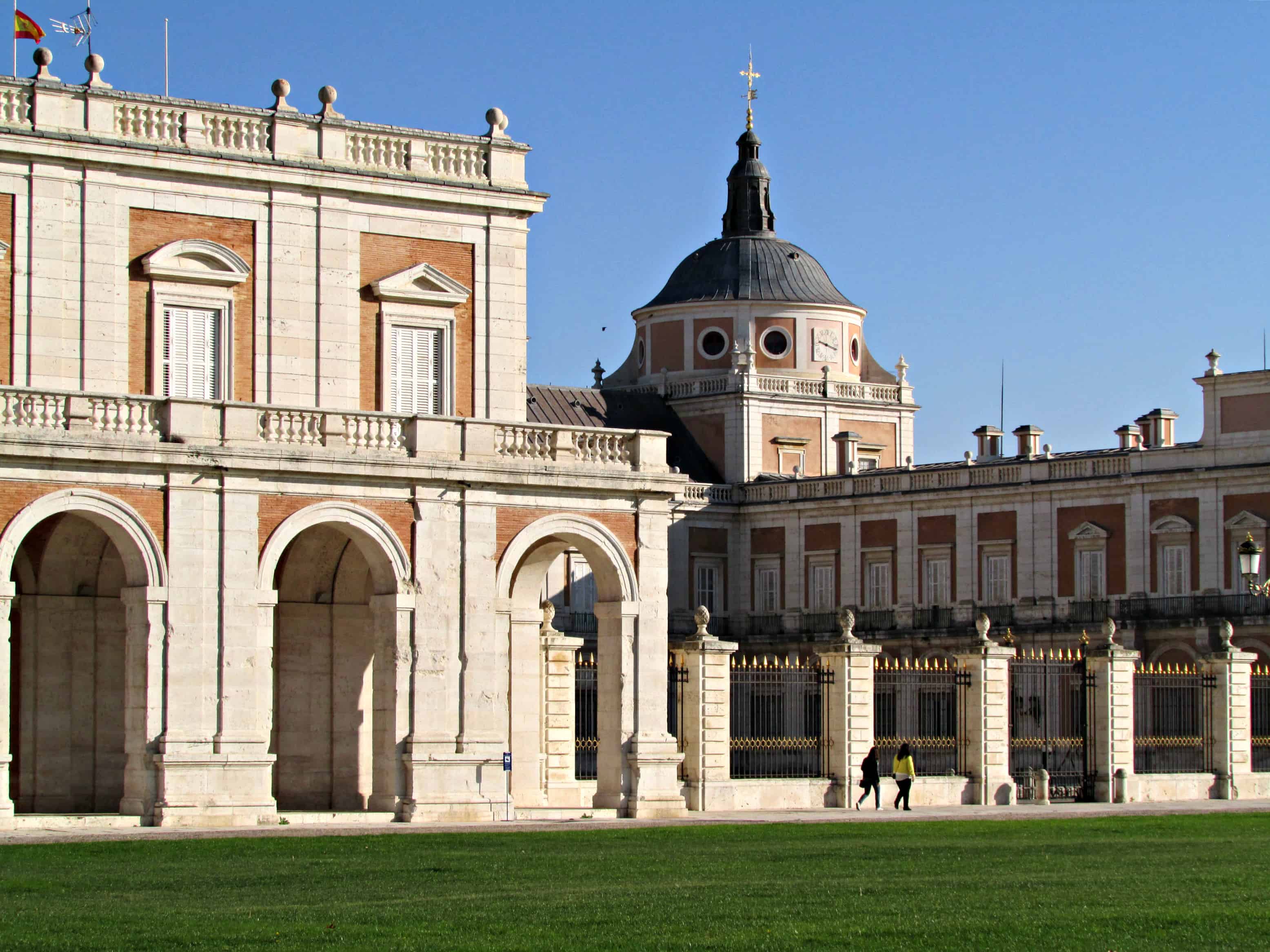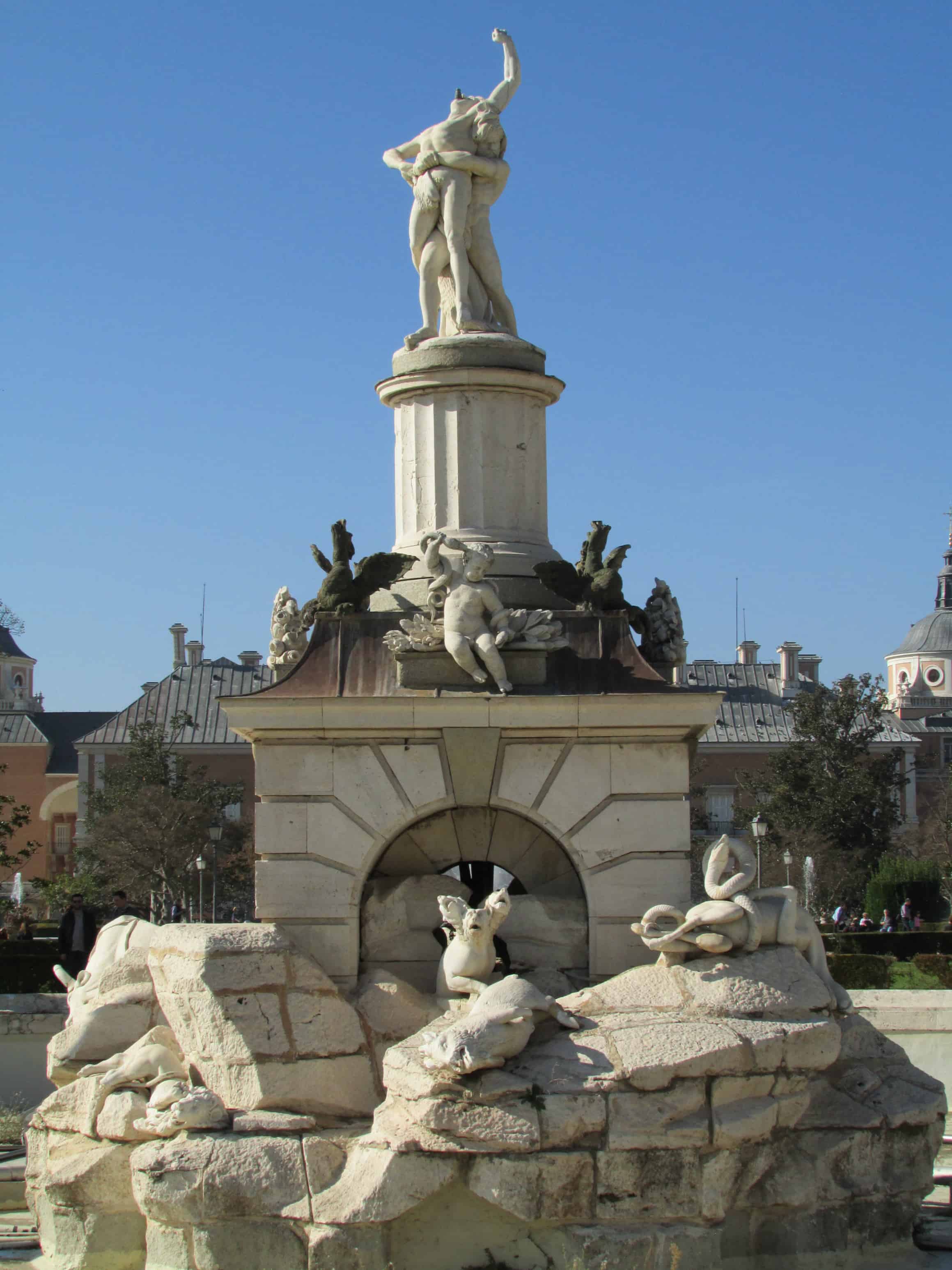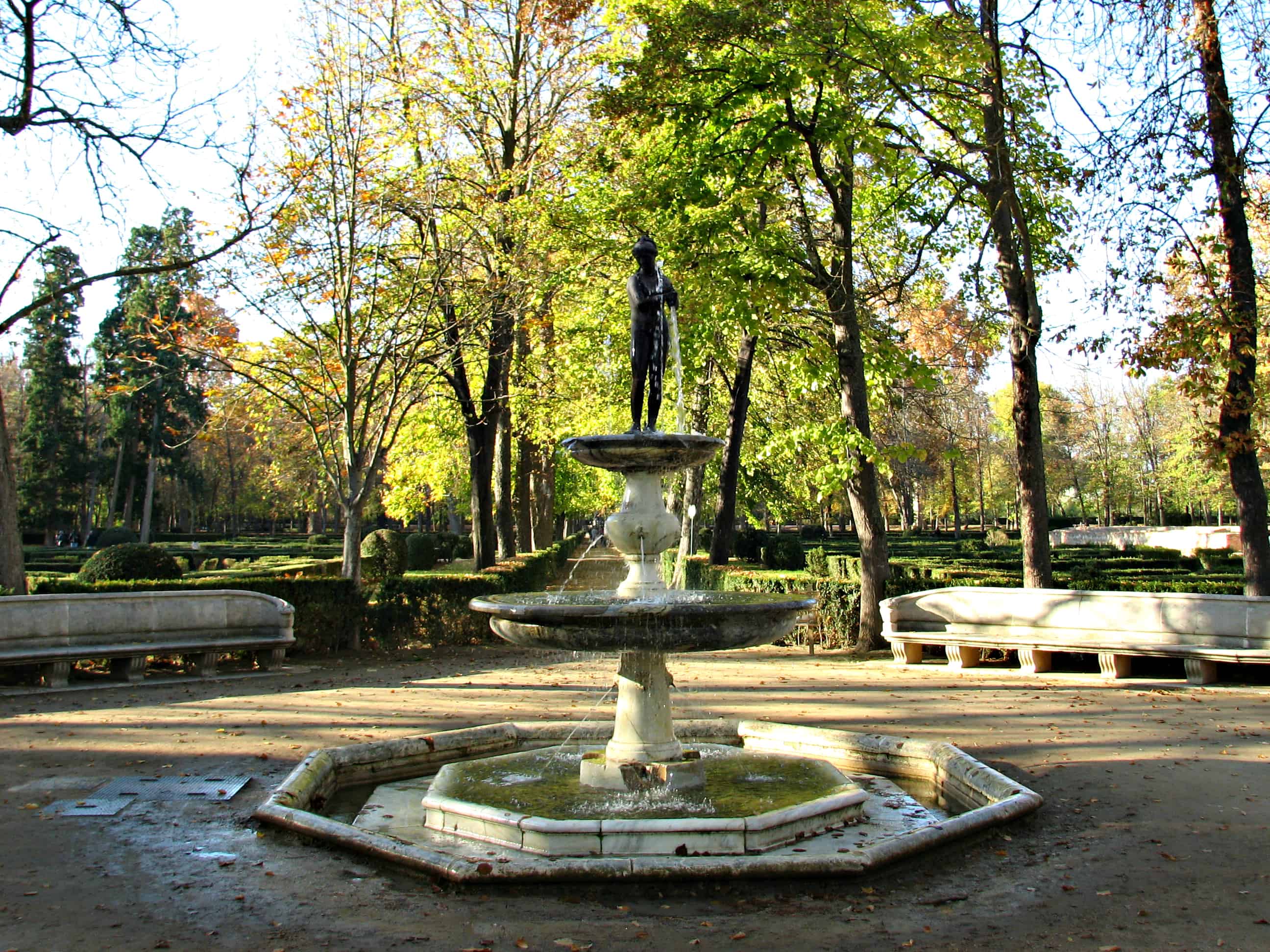A Royal Palace and Gardens in a Royal City - Aranjuez, Spain
Discover the Royal Palace of Aranjuez near Madrid, a UNESCO World Heritage Site, featuring stunning gardens and rich royal history.

Four Part Series on Royal Residences and Gardens Near Madrid, Spain – Part One
The Royal Palace of Aranjuez will be our first stop on a tour of this region of Spain. We depart from Madrid’s bustling Atocha Train Station and reach Aranjuez 45 minutes later. Exiting the small station we head into town…a pleasant fifteen minute walk along shady tree lined streets. It is very quiet with just the occasional barking dog.

The open Plaza de las Parejas is to our right. Beyond the Plaza I spot what looks to be a hotel in a beautiful old building with balcony views of the Palace. Since this is just a day trip from Madrid, I jot down the hotel’s name, Palacio de Aranjuez. Already I know a return trip will be in the near future…so much to see.
Up ahead to our left we see it – the Royal Palace of Aranjuez. Today we are focusing on the Royal Palace and the gardens that immediately surround it…the King’s Garden, The Palace Parterre, and the Island Garden.
The Royal City
In 2001, Aranjuez was named a World Heritage Site by UNESCO. The Royal Palace was the spring residence for the monarchs from the 16th to the mid-19th century. Designed as a court town, only servants from the Royal household could reside in the town. Everyone else stayed overnight in other villages and came to Aranjuez for the day.

The stately city looks royal. With its broad tree lined promenades, majestic baroque buildings, statues, and fountains you can see history in every direction. This was urban planning at its best.
The Royal Palace of Aranjuez
Built over a period of two centuries, the spring palace sits on the site of an 11th century palace owned by The Order of Santiago. An abundance of water from the Tagus River and many acres of wooded land made this the ideal location. An unexpected uniformity exists despite the input of several monarchs and their architects.

As we approach from the train station the main facade of the Royal Palace faces us.
Designed by Sabatini, ornate railings connect the two wings flanking each side of the palace creating the Courtyard of Honor or Parade Grounds. The Royal Chapel (1778) and the Theatre (1775) are located in these wings. Turning a corner we enter the Palace through a side door and begin our tour.

We were told, “Absolutely no photos allowed.” Guards were very strict. As we toured, a few visitors were asked to hand over their cameras due to breaking the rules. I can understand the temptation to take a photo…this Royal Palace of Aranjuez is Royal with a capital R and impressive. Filled with priceless paintings, tapestries, furniture, sculptures, chandeliers, and so much more…it deserves a place on your bucket list.
The King’s Garden


The small but enchanting King’s Garden was started in 1577 and finished in 1582. The center holds a small fountain made of green jasper where the King could look down on it from his many balconies. The garden can be entered through a door from the palace.
A formal garden with colorful flowers sits within the borders of the manicured hedges. The unique niches with their sculptures provide a sense of whimsy.
Open archways lead into covered private spaces for the Royal family. I can picture them there on a warm summer day.
The Palace Parterre
The Parterre begins in front of the King’s Garden. Adjacent to the peaceful Tagus River, it continues to the busy intersection in front of the palace. Plant filled marble urns sit on top of pillars attached to iron railings creating a wall. This wall separates the Parterre from the Island Garden and river. Pathways lined with curving hedges and flower beds complete the design.

We see quite a few people taking selfies by the rims of the Parterre’s ponds. The sculptural fountains shooting jets of water in the air creates a picture perfect background. In spite of not operating today, the Fountain of Hercules and Antaeus still draws a crowd.
The Island Garden

We next explored the Island Garden located across a small inlet of the Tagus River called the Cascade of the Castanets. The inlet spreads out and widens into a fan or castanet shape. To reach the garden take the steps down from the small bridge connecting it with the Palace Parterre.
Directly ahead is the Hercules Fountain watching over the steps and side facade of the palace since 1661.

Like others in front of us, we stop as we approach the lifelike and beautifully maintained sculptures. We can thank King Charles V for his vision of developing the island into an Italian French garden which would survive the ages. He would be pleased to see it today.
The Design

Long rectangles divide the garden, each rectangle contains squares. We agree this gives the illusion of greater space. Many tree lined pathways and avenues provide much needed shade on a warm, sunny day.
We find flower beds scattered throughout the grounds. Enormous stone benches from the time of Charles III sit among manicured box hedges. Older family members rest on the benches while the children play at their feet.
The Fountains at Island Garden

The vast array of working fountains highlight the Island Garden. From the whimsical Bacchus Fountain with Bacchus sitting on a keg to the mythological bronze sculptures found on the Neptune Fountain, each fountain is detailed and unique.
The water to power the fountains comes from a reservoir called the Sea of Ontigola. The original lead pipeline was replaced with one made from iron in the mid 1500’s. Amazingly, it still works in spite of its age.

As we stand at our final stop in front of The Boy with a Thorn Fountain a gentleman approaches.
He visits the Royal Gardens weekly and shares that the original placement of the fountains is from 1582 but additional fountains were added over the years. He asks if we like the gardens. In unison we reply, “Si!” As we walk back across the bridge to the Parterre Garden, I am already planning our return.
If You Go
Royal Palace of Aranjuez: Plaza de las Parejas. Tel +34 918 91 07 40. Typically closed on Monday. The hours vary by season so check with the Tourist Office. Prices for adults- 5E.

Transportation: The train from the Atocha Station in Madrid runs regularly. Prices vary by time and age. On weekends: May – October (excluding July) The Strawberry Train, a wooden steam locomotion train, runs between Madrid and Aranjuez. Reservations required.
Eat: The Dubliner. Calle Principe 26. Tel +34 918 01 15 29. It’s perfect for a light meal or beverage. Sit outside if the weather allows.
Lodging: Read reviews and check prices for NH Collection Palacio de Aranjuez on Trip Advisor, a MilesGeek Affiliate.




